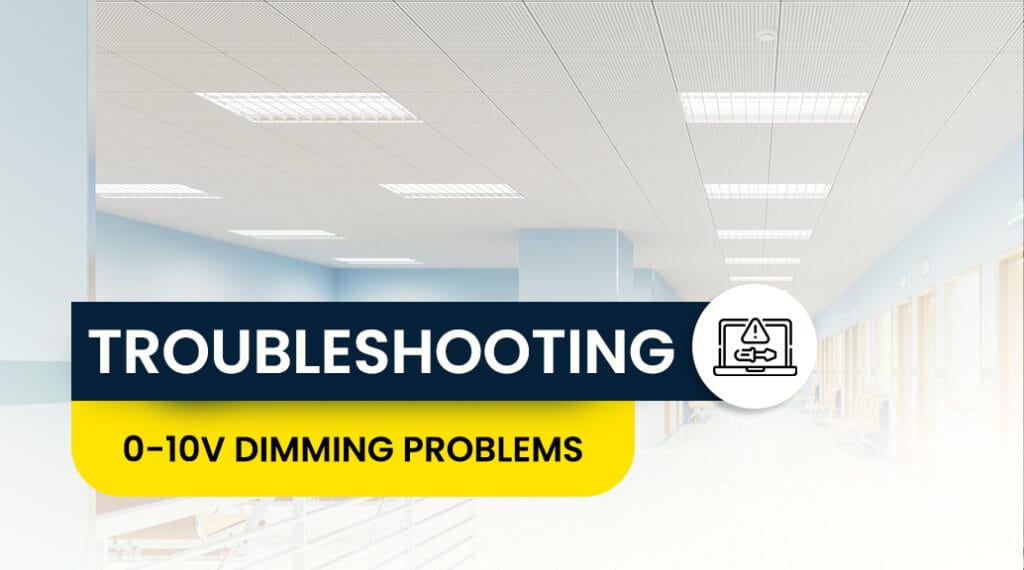How to Optimize 0-10V Dimming Control for Best Results?

0-10V dimming is the most flexible and simple lighting control strategy widely used, as it can make a huge difference in your lighting design. In commercial and industrial applications, having your LED fixtures equipped for dimming will allow you to save energy and create a customized ambiance. However, this doesn’t mean that 0-10V dimmers work flawlessly across LED luminaires. You might have experienced flickering, flashing, or blazing luminaires that require troubleshooting. So, here in this article, we have compiled common 0-10V dimming issues and some essential tips to fix them. Let’s take a closer look.
Before going into details, click here to learn the basics of 0-10V dimming in a lighting control system.
Troubleshooting 0-10V dimming issues
Driver and dimmer issues
The most important parts of an LED light fixture are driver and dimmer. There can be an issue with the driver or the dimmer if the lighting fixture cannot function properly with it. An LED driver creates a seamless flow of current throughout the circuit and safeguards the lighting fixture against current and voltage fluctuations. If the LED driver is not functioning well, there will be no current regulation in the circuit, which can result in many problems with the lighting fixture.
Dimmer and LED driver are connected by two low voltage control wires. After disconnecting the wires from the circuit, touch the two wires for a very short time. If the lighting fixture is dimmed to its lowest intensity, driver is functional, there may be a problem with dimmer or wires. If not, replacing the driver will help you solve the problem.
When it comes to choosing drivers for your lighting control system, Lumos Controls is a clear winner for a flicker-free lighting experience. Check out our smart LED drivers with selectable output current.
Using incompatible dimmers
To put it simply, a dimmer raises or downs the brightness of a fixture. But for the LED fixture to operate at its best, a dimmer must be compatible. When combining 0-10V dimmers and 1-10V drivers together, it can cause problems like flickering, flashing, or stumbling. Sometimes, we have to even disconnect the power supply to turn off the light fixture.
So, it is always better to look for a high-quality lighting control devices that is tailored for your lighting system. This is why it makes sense to specify our 0-10V control devices which are designed to meet highest standards.
Improper wiring issues
Pay attention to connections! A buzzing or crackling noise or a flickering light fixture are frequent indicators of loose wire connections at a switch, outlet, or lighting fixture. Turn off the main power and tighten all the loose connections if there are any. Care should be taken to remove the short wires in the circuit.
Ensure connections are made properly at the time installation itself. If there is a problem with the connection, you can use a wire stripper to carefully remove the insulation from the wire and check for any loose or damaged strands. You can then re-attach the wire to the terminal and retest with the circuit tester to verify that the connection is secure.
We have discussed about 0-10V wiring in detail in our previous blog. Click here to read.
In summary
By considering key issues associated with 0-10V dimming system, it will be easier than ever to control the functioning of lighting fixture that meets energy-saving, optimal performance, and aesthetic needs.
Want help with selecting for a fixture with 0-10V dimming? Contact our lighting experts now.